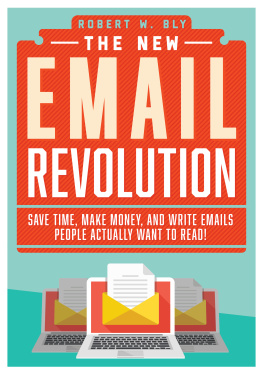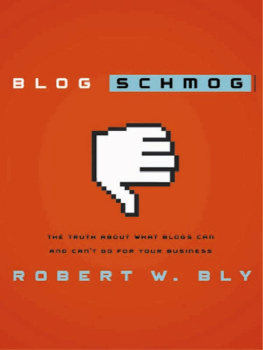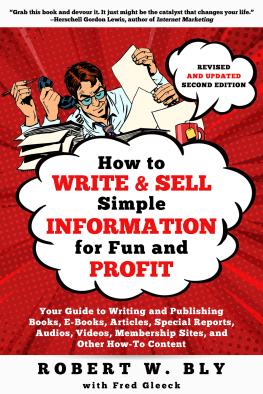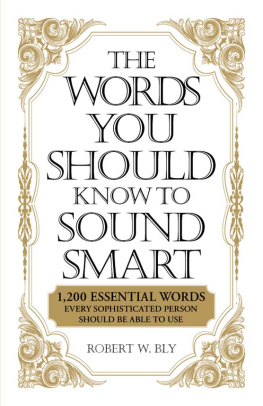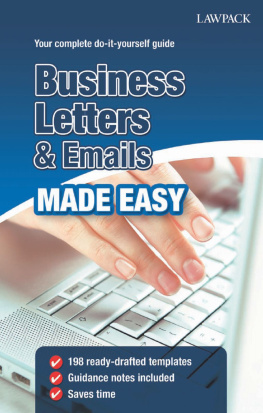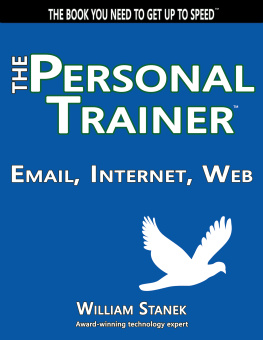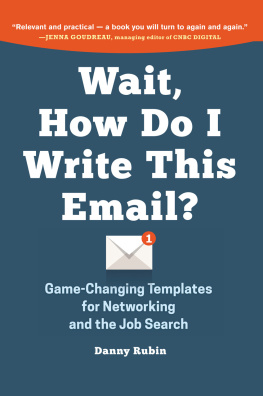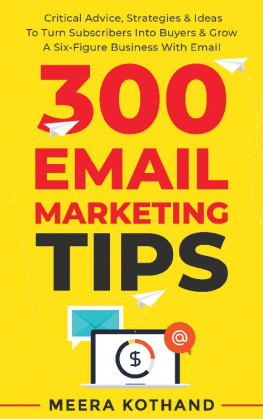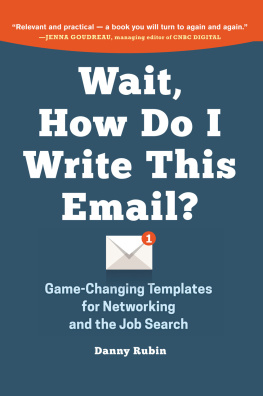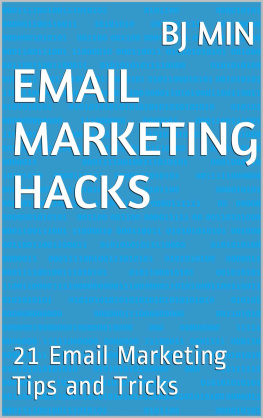Copyright 2018 by Robert W. Bly
All rights reserved. No part of this book may be reproduced in any manner without the express written consent of the publisher, except in the case of brief excerpts in critical reviews or articles. All inquiries should be addressed to Skyhorse Publishing, 307 West 36th Street, 11th Floor, New York, NY 10018.
Skyhorse Publishing books may be purchased in bulk at special discounts for sales promotion, corporate gifts, fund-raising, or educational purposes. Special editions can also be created to specifications. For details, contact the Special Sales Department, Skyhorse Publishing, 307 West 36th Street, 11th Floor, New York, NY 10018 or .
Skyhorse and Skyhorse Publishing are registered trademarks of Skyhorse Publishing, Inc., a Delaware corporation.
Visit our website at www.skyhorsepublishing.com.
10 9 8 7 6 5 4 3 2 1
Library of Congress Cataloging-in-Publication Data is available on file.
Cover design by Rain Saukas
Cover photo credit iStock
ISBN: 978-1-5107-2791-5
Ebook ISBN: 978-1-5107-2792-2
Printed in the United States of America
Dedication
To Andrew Linickfriend, teacher, colleague
Acknowledgment
Id like to thank my agent, Bob Diforio, for connecting me to this project and its publisher; my acquisitions editor Michael Lewis for suggesting this book and then agreeing to have me write it; and my editor Michael Campbell for making it much better than it was when the manuscript first landed on his desk.
Also, thanks to all the digital marketers who provided sample emails, ideas, and strategies for the book. I appreciate Bob Reina of Talk Fusion, who took the time to educate me on the benefits of using video email. I am also grateful to Jennifer Holmes, Marilyn Pincus, Kim Stacey, and Justin Cassata for their invaluable editorial and research assistance. A few sections of the book appeared, in slightly different form, in articles published in Target Marketing and DM News .
Contents
This chapter explains how the Internet connects millions of PC, smart phone, and other mobile device users via their Internet Protocol (IP) addresses.
Guidelines for when you can and cannot send emails to people whom you do not knowand what you are allowed and not allowed to say in them.
How to create and optimize each element including From line, subject line, headline, lead, body copy, bullets, pictures, call to action, hyperlink, other response mechanisms, close, and P.S.
The 3 kinds of From lines and when to use each; what works best in subject lines; optimal character count for subject lines; how to A/B split test subject lines for maximum results.
Similarities and differences between writing a print letter vs. writing an email; principles of composition; choosing the right messaging; making your copy more compelling and persuasive; writing for online readers.
Pros and cons of text vs. HTML; formatting and design of text emails; designing an HTML email with visuals; advantages of text within an HTML shell.
Embedding video in your emails including available styles (white board or sketch vs. live footage), equipment needed, and optimal run time.
Best type of hyperlink (underlined phrase vs. click button), best destination for hyperlinks, most effective CTAs, where in the email body to place hyperlinks, and how to write and design landing pages, registration pages, and other online forms.
An autoresponder is software that automatically sends out either a single email or a sequence of timed emails, either on a preselected date or triggered by a specific action, such as a consumer filling out a survey or downloading a free e-book, or failure to renew a subscription. The proper use of autoresponders can boost online sales in digital marketing 10% to 30% or more.
Naming the newsletter, designing the masthead, coming up with ideas for articles, writing the copy, e-newsletter body design, building a subscription list, handling subscriber complaints, opt-out language and mechanism required, and optimal length, frequency, time of day, and day of week to distribute.
Emails for congratulations, condolences, sympathy, get-well-soon, requesting a favor, declining an invitation, letter of complaint, apologies, answering tough questions, giving unsolicited advice, holiday emails, congratulations, giving thanks, and many others.
Covers many types of business email correspondence including business greetings, post-meeting follow-up emails, cordial contacts, referrals, introductions, copyright violation notices, requesting a meeting, declining an invitation, renewal notices, collections, sales proposals, and dozens more.
How to create emails for a wide range of marketing offers including e-commerce, lead generation, upselling, PayPal and credit card orders, webinar invitations, subscription marketing, new product announcements, sales and discount offers, product upgrades, emails to reactivate dormant accounts, and many more.
One of the hottest trends in marketing today is to offer free consumer or business information, known as content. This chapter shows how to create content that increases response to email marketing campaigns as well as how to drive traffic to your existing content with emails.
Rules and guidelines for designing your emails so they are easily readable on a variety of standard web browsers as well as laptops, notebooks, smart phones, and other devices.
Emails are just one of dozens of communications vehicles available to us in the twenty-first century. But how do you make the decision whether to send an email, make a phone call, send a postal letter, run a banner ad, or hold a Snapchat conference? Here are some of the most effective ways to integrate email into an overall communications or marketing strategy.
The graphic symbols most commonly used in email and the meaning and appropriate usage of each.
A sampling of email marketing messages including the full text of the email, andwhere availablethe results include open rates, click-through rates, conversion rates, number of units sold, and gross revenues.
Introduction
D espite all the buzz about Snapchat, Twitter, Instagram, and other social media, email is still the most widely used way people communicate at a distance in writing, whether personally, as consumers, or in businessthe killer app of digital communication.
According to market research firm The Radicati Group, in 2015 there were over 205 billion emails sent and received daily worldwide
Fierce CMO reports that 98 percent of consumers ages 18 to 64 check their email address at least one to three time per day. An article in Chief Marketer reports that millennials expect email to remain their preferred method of communication at work for the next five years.
The New Email Revolution is the definitive guide to writing effective emails both at home and at the office. It covers email messages for personal and social correspondence, business communication, and email marketing.
With this book in hand, you will be able to quickly and easily:
Find model correspondence you can use to create emails for many different situations.
Know the right wording and optimal word length for email communication.
Get recipients to read and respond to your email messages.
Understand when it is legal and not legal to send email to a person you do not know.
Incorporate photos, graphics, sound, and video into your email messages.

